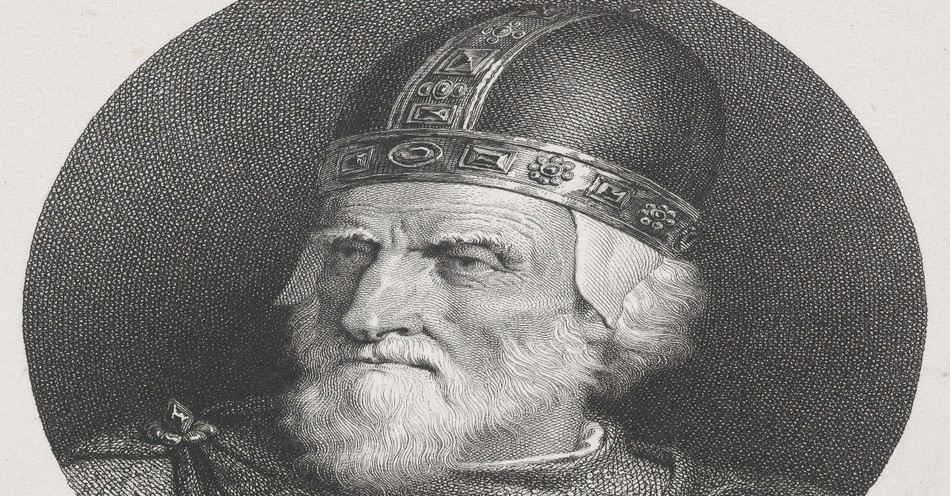When we see much division all around us, it’s a good time to remember that all leaders are complicated. We can see this clearly when we study historical figures who were unifiers (and the complex methods they used to achieve that unity). Although they operated in a completely different context, there may be lessons we can glean. One such figure is Charlemagne or Charles the Great (latin name Carolus Magnus).
Charlemagne is a looming powerhouse of a historical figure and a notable unifying force. He was a leader reigning during a time of great transition and change in Europe. He was, in succession, King of the Franks, King of the Lombards, and then King of the Holy Roman Empire (otherwise known as the Carolingian Empire). He united much of western and eastern Europe as the first recognized central leader after the fall of the Roman Empire in 476 AD. So, how does a man obtain the skills necessary to unite a vast number of peoples, tribes, cultures, and nations under one rule? Some of his methods we now reject, but others can be applied in our times.
Who Was Charlemagne?
Charles was born sometime in the 740s AD, the oldest son of Frankish King Pepin in what is now modern-day Belgium. Pepin was only a mayor when Charles was born but eventually ascended to the throne.
When his father died in 768, for a brief time, he shared the rule of the Franks with his younger brother, Carloman, until Carloman’s sudden death in 771. (There are reports that Carloman died of a nosebleed and others that it was a peptic ulcer).
Charlemagne lived and reigned until he died in 814. He died (of a fever probably related to pleurisy) in Aachen, a town located in what is now Germany.
Charlemagne’s father, Pepin, was not a king at Charlemagne’s birth. He rose to power after promising to protect the papacy, allying himself with Rome, and even securing the land which would become the Papal State. Charlemagne obviously learned from his father, so when he co-ruled with his younger brother, he allied with the king of the Lombards. He strengthened his rule by marrying the king’s daughter to seal the alliance
Charlemagne was a warrior king, and especially early in his reign, his kingdom spread through conquest. He was, reportedly, a man of great strength and vigor who enjoyed active outdoor pursuits and thrilled to engage in battle. He was also vigorous in his personal life. Over his lifetime, he was the husband of five wives (not simultaneously) and fathered somewhere around eighteen children (born of wives and concubines). He was reportedly also deeply involved in the education and upbringing of his children. He didn’t allow his daughters to marry when he was alive, probably to prevent any potential husband’s families from rivaling him in power.
He was a man who preferred simple dress rather than more extravagant regality. He was a moderate drinker of alcohol but loved food, so fasting was a challenge for him. He was a man equally comfortable on the battlefield and in court. He honored the old traditions, but also embraced new approaches in forming alliances and diplomacies to secure and unite new lands.
There were, of course, forced conversions of conquered peoples to Charlemagne’s faith. This is not a practice considered biblical or desirable now but was not an uncommon practice in Charlemagne’s times. Thus, as his conquests and kingdom spread, so did the church’s teachings and the papacy’s power.
Top 10 Events in the Life of Charlemagne
1. In 751, when Charlemagne was a boy, his father, Pepin the Short, was named King of the Franks. This began what would become known as the Carolingian Empire.
2. Charlemagne was named co-king of the Franks following his father, Pepin the Short’s death in 768, despite his birth before Pepin married his mother, Bertrada.
3. Carloman died in 771, and Charlemagne, ignoring any potential claims by his younger brother’s descendants, became the sole King of the Franks.
4. In cooperation with the heads of the church in Rome, Charlemagne waged war with and conquered the Lombards, thus making Italy part of his empire. He became King of the Lombards in 774. In 781, his son, Pippin, was named King of Italy in Rome.
5. During most of Charlemagne’s reign, the Franks also battled the Moors in Spain and sought to hold back the influence of the Muslims, as had his ancestor Charles Martel, over that territory and the Pyrenees. The rule of that territory changed with the outcome of every battle, and conquest was not complete until years after Charlemagne’s death.
6. The Saxon Wars lasted nearly 30 years and involved countless battles, but Charlemagne eventually conquered Saxony, and that region was also converted to Christianity.
7. In 787, Charles ordered bishops and abbots to open schools near all their churches and monasteries, thus expanding European education. Literacy was valued and required during his reign. He felt it was vital for people to read and understand Latin to appreciate Rome’s teachings better. He also ensured palace schools existed for teaching royal families.
8. Charlemagne conquered and united most of Europe and was named Emperor on December 26, 800 AD, by Pope Leo II at St. Peter’s in Rome. He was referred to as “Emperor” or “Augustus,” much like the Caesars of the former Roman empire. This fulfilled many of the church’s leaders’ dreams of naming a Christian king to rule over most of then-known Europe. He has been called Pater Europae or the Father of Europe because of this.
9. In 813, Charlemagne delegated his power to his son, Louis.
10. In 814, Charlemagne died.
How Did Charlemagne Affect Christianity?
Using methods that were common for his times, Charlemagne sought to spread the Christian faith and unite all peoples under that faith. He was reportedly deeply impressed when reading Augustine’s City of God. Charlemagne is remembered as an idealist and a man who deeply valued education and culture. Sadly, military conquest and forced conversions, in line with the tools of the time, were his usual mechanisms for creating the unity he sought.
Charlemagne also cared about reforming culture and the church. He took his role seriously as the defender of the church, defending her from external and internal threats. He reformed the liturgy, released religious leaders who didn’t display appropriate piety, created rules for monks and priests, and concerned himself with addressing errant doctrine.
He was a leader of his times, using the mechanisms of his times, and should be understood in that context. However, two lessons the church must take from Charlemagne’s reign are the inadequacy and unbiblical nature of forced conversions and the risks of merging political leadership with church leadership.
Why Should We Study Charlemagne Today?
In modern times, other idealists believe that what is best for the people of God is to have political leaders who also have church power. While Christian groups do require leadership and oversight, combining political and church leadership creates a lot of room for hypocritical or false leaders who commit atrocities in the name of church and country. The Holy Roman Empire grew and educated many about Jesus, spreading the faith far and wide, but it also spread political and religious corruption that the Protestant Reformation addressed centuries later.
God expects the lives of Christians to influence their families, communities, culture, and nations. Still, this influence is best effectively exercised person to person, not through edict, force, or conquest. As we live for Christ, our lives should be admirable and desirable to others so that they are drawn to faith by attraction, not forced by the sword.
Charlemagne’s educational reforms, intended to help people understand the writings and teachings of our faith, built intellectual roads that freed people’s minds. Eventually, those roads freed people from being subject to tyrannical leaders. This emphasis on educating both the citizenry and royals had far-reaching benefits that cannot be understated.
Charlemagne’s life is a fascinating study for anyone looking to see how politics, kings, and military conquest impacted the church’s growth and vice versa. As with most great political leaders or kings, there are achievements to admire and some not to emulate. All of the achievements are interesting in the context of his times and worth studying today.
Photo Credit: Wikimedia Commons/Theodoro Matteini
This article is part of our People of Christianity catalog that features the stories, meaning, and significance of well-known people from the Bible and history. Here are some of the most popular articles for knowing important figures in Christianity:
How Did the Apostle Paul Die?
Who are the Nicolaitans in Revelation?
Who Was Deborah in the Bible?
Who Was Moses in the Bible?
King Solomon's Story in the Bible
Who Was Lot's Wife in the Bible?
Who Was Jezebel in the Bible?
Who Was the Prodigal Son?


.jpg)

.jpg)
